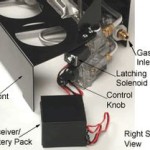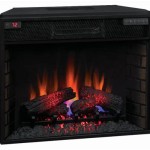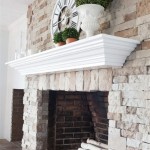Fireplace Screen Ideas: Enhancing Safety and Style
A fireplace acts as a focal point in many homes, providing warmth and creating a cozy atmosphere. However, operating a fireplace without proper safety measures poses potential hazards. Sparks and embers can escape the firebox, potentially damaging flooring, furniture, and even leading to a house fire. A fireplace screen serves as a crucial safety barrier, effectively containing these hazards while also enhancing the aesthetic appeal of the fireplace area.
Selecting the right fireplace screen involves considering a variety of factors, including the size and shape of the fireplace opening, the overall décor of the room, and personal preferences. Fireplace screens are available in an extensive range of styles, materials, and designs, making the selection process potentially overwhelming. This article aims to provide a comprehensive overview of fireplace screen ideas, enabling informed decisions that prioritize both safety and style.
Understanding the Functionality of Fireplace Screens
The primary function of a fireplace screen is to prevent sparks, embers, and rolling logs from exiting the firebox. This is particularly important when burning wood, which tends to produce more sparks than gas or electric fireplaces. The mesh material of the screen acts as a barrier, preventing these burning projectiles from reaching flammable materials in the surrounding area. Consistent use significantly reduces the risk of accidental fires and property damage.
Furthermore, a fireplace screen provides a measure of safety for children and pets. It creates a physical barrier that prevents them from getting too close to the flames and potentially burning themselves. While a screen should not be considered a substitute for adult supervision, it adds an extra layer of protection, especially in households with young children or curious animals.
Beyond safety, fireplace screens play a significant role in controlling airflow. Some designs can help regulate the draft, improving the efficiency of the fire and reducing smoke entering the room. This is particularly beneficial in older homes with drafty fireplaces that may not have optimal ventilation systems.
Exploring Different Types of Fireplace Screens
Fireplace screens are classified into several types based on their design and functionality. Understanding these different types is crucial for selecting a screen that meets specific needs and preferences. The most common types include single-panel screens, three-panel screens, bi-fold screens, and freestanding screens.
Single-Panel Screens: These are the simplest and often the most affordable type of fireplace screen. They consist of a single panel of mesh framed by a metal border. Single-panel screens are easy to install and move, making them suitable for smaller fireplaces or those with a minimalist décor. However, they may not provide as much coverage as other types of screens, especially for wider fireplace openings.
Three-Panel Screens: These screens offer enhanced coverage and stability compared to single-panel models. They consist of a center panel and two side panels that can be adjusted to fit the width of the fireplace opening. The side panels also provide added protection from sparks that might escape from the sides of the firebox. Three-panel screens are a popular choice for medium-sized fireplaces and offer a balance of functionality and aesthetics.
Bi-Fold Screens: These screens feature two hinged panels that can be easily opened and closed for tending to the fire. Bi-fold screens provide convenient access to the firebox without having to completely remove the screen. They are a practical choice for those who frequently add wood or adjust the fire. However, bi-fold screens may be more expensive than other types of screens and require sufficient space in front of the fireplace to allow for opening the doors.
Freestanding Screens: These screens are designed to stand independently in front of the fireplace without requiring any mounting or attachment. Freestanding screens are a versatile option that can be easily moved and repositioned as needed. They are particularly suitable for fireplaces that are not frequently used or for those who prefer a more flexible arrangement. These typically have feet or a base to provide stability.
Considering Materials and Design Elements
The choice of materials and design elements significantly impacts the overall look and durability of a fireplace screen. Common materials include wrought iron, steel, brass, and glass. Each material offers unique aesthetic qualities and varying levels of heat resistance and durability.
Wrought Iron: Wrought iron is a popular choice for fireplace screens due to its strength, durability, and classic aesthetic. Wrought iron screens often feature intricate designs and patterns, adding a touch of elegance to the fireplace area. They are also highly resistant to heat, making them a safe and reliable option. However, wrought iron can be more expensive than other materials and may require occasional cleaning to prevent rust.
Steel: Steel is a durable and affordable material that is often used for fireplace screens. Steel screens are available in a variety of styles, from simple and modern to more ornate and traditional. They are also relatively easy to clean and maintain. However, steel may not be as resistant to heat as wrought iron and can potentially warp or discolor over time.
Brass: Brass screens offer a touch of warmth and sophistication to the fireplace area. Brass is a durable and corrosion-resistant material that can withstand high temperatures. Brass screens are often polished to a high shine, adding a touch of glamour to the room. However, brass can be more expensive than other materials and may require regular polishing to maintain its luster.
Glass: Glass fireplace screens offer a sleek and modern aesthetic. Glass screens typically consist of a tempered glass panel that is framed by a metal border. They provide a clear view of the fire while also offering protection from sparks and embers. Glass screens are easy to clean and maintain, but they may not be as heat-resistant as metal screens and can potentially crack or shatter if exposed to extreme temperatures. These are best suited for gas fireplaces which emit radiant heat and are less likely to produce flying sparks, though tempered glass can withstand a good amount of heat.
Beyond the choice of materials, the design of the fireplace screen plays a significant role in its overall aesthetic appeal. Fireplace screens are available in a wide range of styles, from simple and minimalist to ornate and decorative. Some screens feature geometric patterns, floral motifs, or wildlife scenes. The design of the screen should complement the overall décor of the room and reflect personal preferences.
Measuring for a Fireplace Screen
Accurate measurements are essential for selecting a fireplace screen that fits properly and provides adequate protection. Before purchasing a screen, carefully measure the width and height of the fireplace opening. It is also important to consider the depth of the firebox, as some screens may extend too far into the room if the firebox is relatively shallow.
To measure the width, measure the widest point of the fireplace opening, typically at the front of the firebox. To measure the height, measure from the hearth to the top of the fireplace opening. It is generally recommended to add a few inches to both the width and height measurements to ensure that the screen provides adequate coverage.
For arched or irregularly shaped fireplace openings, consider using a custom-made fireplace screen. Custom screens can be designed to fit any shape or size, ensuring a perfect fit and optimal protection. Consult with a professional fireplace screen manufacturer or installer to discuss specific requirements and design options.
Installation and Maintenance Tips
The installation process for a fireplace screen varies depending on the type of screen. Single-panel and freestanding screens are typically the easiest to install, requiring minimal effort. Three-panel and bi-fold screens may require some assembly, but the process is generally straightforward. Always follow the manufacturer's instructions carefully when installing a fireplace screen.
Regular maintenance is essential for keeping a fireplace screen in good condition and ensuring its safety. Clean the screen regularly to remove soot and ash, which can accumulate over time and reduce its effectiveness. Use a soft brush or cloth to gently wipe the screen, avoiding abrasive cleaners that can damage the finish. For stubborn stains, use a mild soap and water solution.
Inspect the screen regularly for any signs of damage, such as rust, cracks, or loose mesh. Repair or replace the screen as needed to maintain its safety and functionality. Check the hinges and latches on bi-fold screens to ensure that they are working properly. Apply lubricant if necessary to keep them moving smoothly.
Store the fireplace screen properly when it is not in use. If storing a screen for an extended period, clean it thoroughly and cover it with a protective cloth or plastic sheet to prevent dust and moisture from accumulating. Store the screen in a dry, well-ventilated area to prevent rust and corrosion.

Creative Fireplace Screens Kelly Elko

Creative Fireplace Screens Kelly Elko

Diy Faux Wood Fireplace Screen De Manor Farm By Laura Janning

20 Diy Fireplace Screen Ideas How To Make A Cover

20 Ideas To Diy Your Own Fireplace Screen

Flat Fireplace Screen Rejuvenation

My Diy D Fireplace Screen For Under 30 Less Than Perfect Life Of Bliss

Diy French Country Fireplace Screen Edith Evelyn

110 Best Fireplace Screens Ideas Screen

20 Diy Fireplace Screen Ideas How To Make A Cover
Related Posts








